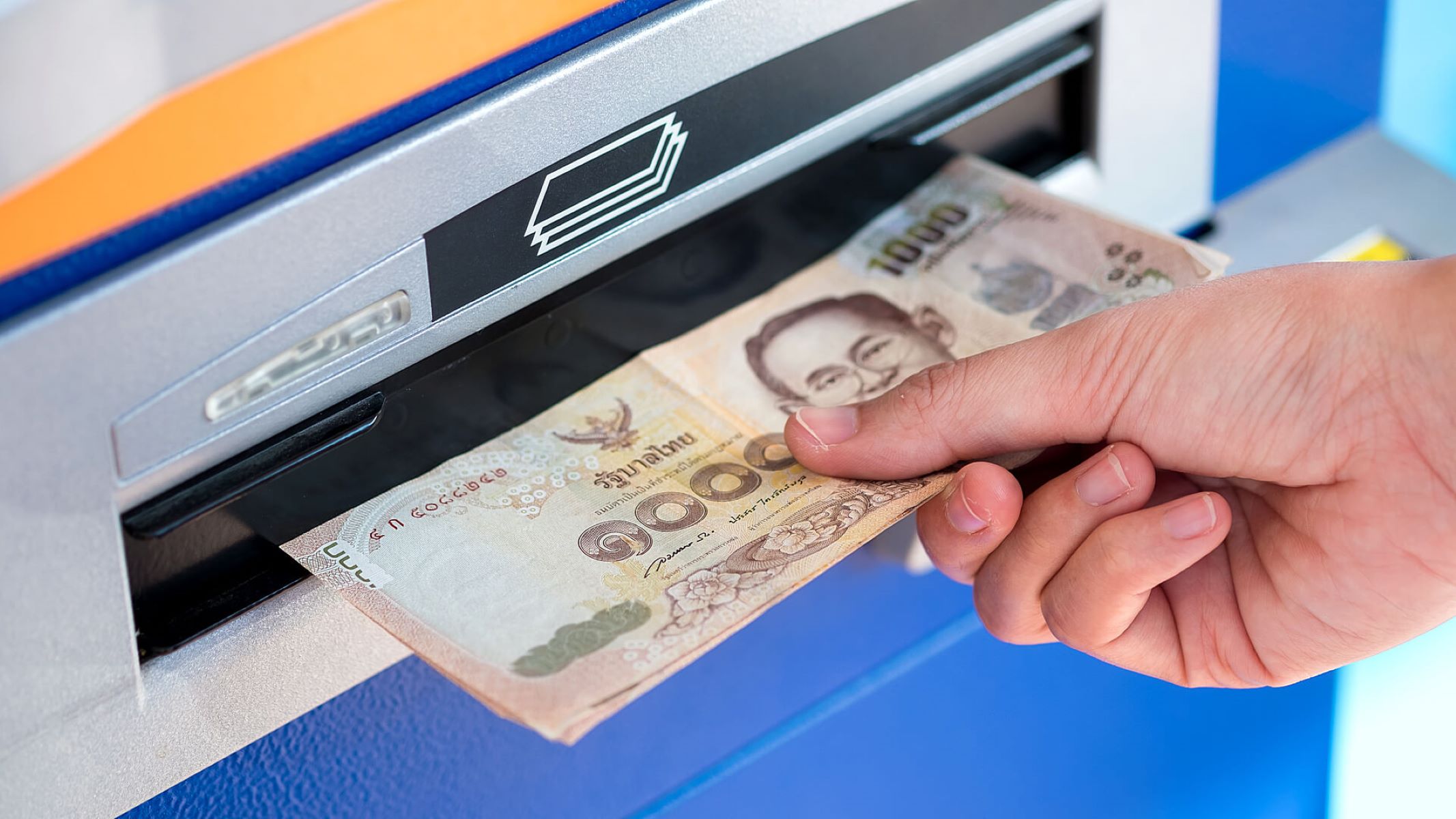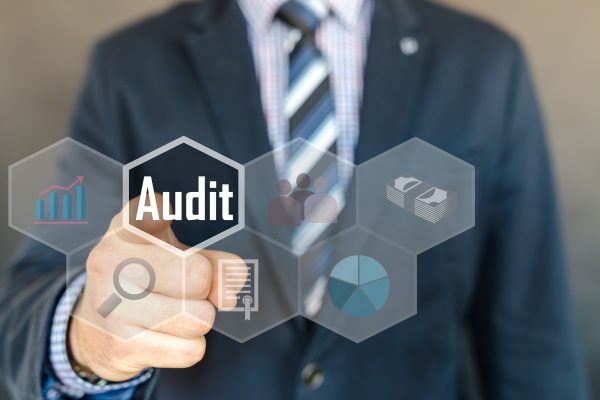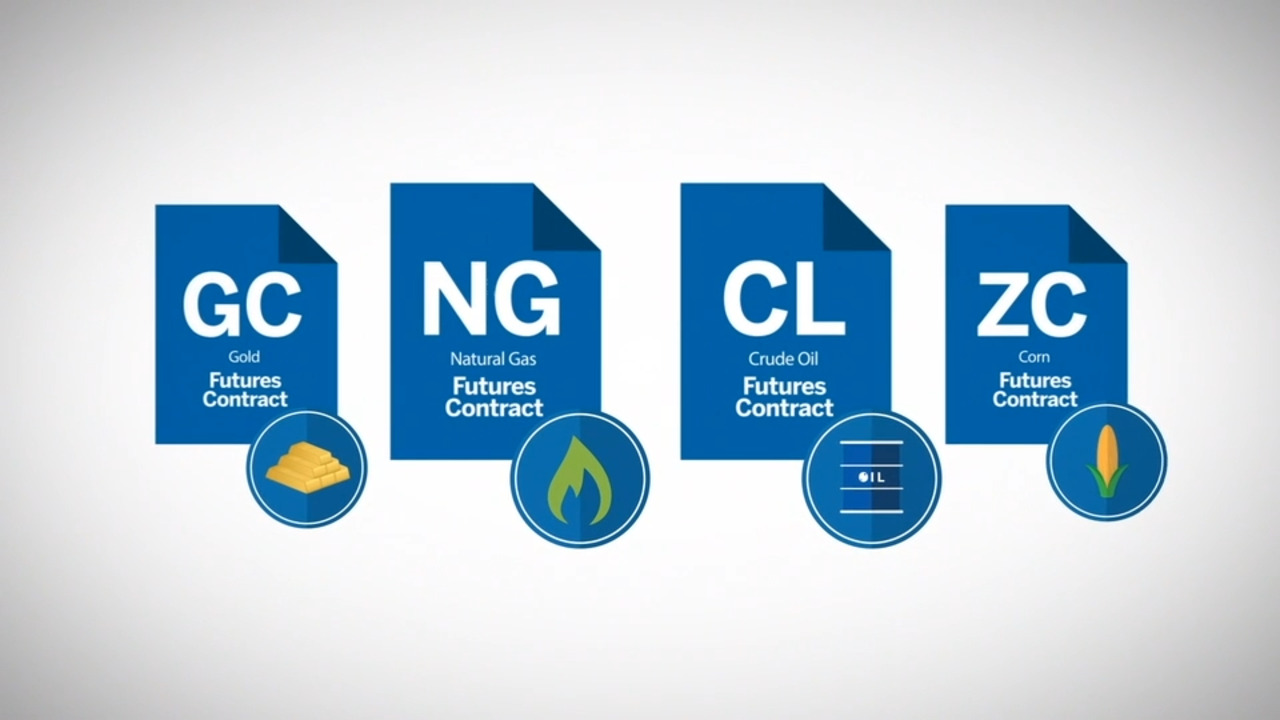

Finance
How Can I Get My Credit Card Debt Forgiven
Modified: December 29, 2023
Learn how to get your credit card debt forgiven and find financial relief with our expert tips and strategies. Take control of your finances with our finance solutions.
(Many of the links in this article redirect to a specific reviewed product. Your purchase of these products through affiliate links helps to generate commission for LiveWell, at no extra cost. Learn more)
Table of Contents
- Introduction
- Understanding Credit Card Debt Forgiveness
- Options for Credit Card Debt Forgiveness
- Debt Settlement
- Debt Consolidation
- Balance Transfer
- Debt Management Plan
- Bankruptcy
- Eligibility Criteria for Credit Card Debt Forgiveness
- Factors That Affect Credit Card Debt Forgiveness
- Pros and Cons of Credit Card Debt Forgiveness
- How to Apply for Credit Card Debt Forgiveness
- Steps to Take After Credit Card Debt Forgiveness
- Conclusion
Introduction
Managing credit card debt can be a challenging and overwhelming experience. High interest rates, multiple payments, and the pressure to meet monthly obligations can often lead to financial stress and frustration. However, there may be a glimmer of hope for those struggling with credit card debt in the form of credit card debt forgiveness.
Credit card debt forgiveness refers to the process of having a portion of your outstanding credit card debt eliminated or reduced. This can provide much-needed financial relief and help you regain control of your finances. But how does it work, and is it a viable option for you?
In this article, we will explore the concept of credit card debt forgiveness and discuss various options available to individuals seeking relief from their credit card debt burden. We will also delve into the eligibility criteria, factors that affect forgiveness, the pros and cons of pursuing debt forgiveness, and the steps involved in applying for credit card debt forgiveness.
It’s important to note that credit card debt forgiveness is not a one-size-fits-all solution, and not everyone will qualify for it. It is crucial to evaluate your personal financial situation, consider all available options, and seek professional advice before making any decisions.
Remember, overcoming credit card debt requires a combination of financial discipline, strategic planning, and responsible borrowing. Credit card debt forgiveness should be viewed as a last resort, reserved for situations where all other avenues have been exhausted.
Now, let’s dive deeper into the world of credit card debt forgiveness and discover how it can potentially offer a fresh start for those burdened by overwhelming debt.
Understanding Credit Card Debt Forgiveness
Credit card debt forgiveness is a process by which a portion of your outstanding credit card debt is canceled or reduced. It is typically offered by credit card companies as a way to help individuals who are struggling to repay their debts. While it may sound like a perfect solution to alleviate financial burdens, it’s important to understand the intricacies of credit card debt forgiveness before considering it as an option.
When credit card companies forgive a portion of your debt, they are essentially waiving the amount owed. This can be done through various means, such as negotiating a settlement, participating in a debt management plan, or even filing for bankruptcy.
It’s worth noting that credit card debt forgiveness does not mean that all of your debt will be eliminated. In most cases, only a portion of the outstanding balance is forgiven. The exact amount forgiven will depend on factors such as your financial hardship, negotiation skills, and the willingness of the credit card company to work with you.
Debt forgiveness is typically offered to individuals who demonstrate a genuine inability to repay their debts due to financial hardship. Examples of financial hardships include job loss, medical emergencies, or a significant decrease in income. It is important to provide documentation and evidence of your financial hardship when applying for credit card debt forgiveness.
Before pursuing credit card debt forgiveness, it’s essential to consider the potential consequences. While it may provide temporary relief, there can be long-term implications for your credit score and future borrowing capabilities. Credit card debt forgiveness can negatively impact your credit history and make it more challenging to secure loans or credit in the future.
Additionally, credit card debt forgiveness can have tax implications. The forgiven amount may be considered taxable income by the IRS, which means you may be required to pay taxes on the forgiven debt. It’s crucial to consult with a tax professional to understand the potential tax obligations associated with credit card debt forgiveness.
In the next sections, we will explore the various options available for credit card debt forgiveness, as well as the eligibility criteria and factors that can affect your chances of successfully obtaining debt forgiveness. By understanding these aspects, you’ll be better equipped to determine if credit card debt forgiveness is the right path for your financial situation.
Options for Credit Card Debt Forgiveness
When faced with overwhelming credit card debt, it is crucial to explore the different options available for debt forgiveness. These options can provide a way out of the vicious cycle of high-interest rates and mounting debt. Here are some common methods for credit card debt forgiveness:
- Debt Settlement: Debt settlement involves negotiating with your credit card company to pay a reduced lump sum amount to settle your debt. If successful, the remaining debt balance is forgiven. However, debt settlement may require you to have a significant amount of money upfront in order to make the negotiated payment. It can also have a negative impact on your credit score, so it’s important to consider the potential consequences.
- Debt Consolidation: Debt consolidation involves combining multiple credit card debts into one loan with a lower interest rate. This can make it easier to manage your debt and potentially reduce the overall amount owed. Debt consolidation can be done through a personal loan, home equity loan, or a balance transfer to a credit card with a lower interest rate. It’s important to carefully evaluate the terms and fees associated with debt consolidation to ensure it is the right option for you.
- Balance Transfer: A balance transfer involves moving the outstanding balance from a high-interest credit card to one with a lower interest rate, often with an introductory period of 0% interest. This can provide temporary relief by reducing or eliminating interest charges, allowing you to focus on paying off the principal balance. However, it’s important to be aware of any balance transfer fees and the duration of the promotional interest rate.
- Debt Management Plan: A debt management plan (DMP) involves working with a credit counseling agency to create a repayment plan that is affordable based on your financial situation. The counseling agency will negotiate with your creditors to potentially reduce interest rates and waive certain fees. You make one monthly payment to the agency, and they distribute the funds to your creditors. DMPs typically have a structured timeline for debt repayment, usually ranging from three to five years.
- Bankruptcy: Bankruptcy is a legal process that can provide debt relief, including credit card debt forgiveness, for individuals who are unable to repay their debts. It should be considered as a last resort due to its long-term impact on your credit and future financial options. Bankruptcy laws vary depending on your country and may require you to meet specific eligibility criteria.
It is essential to carefully analyze your financial situation, assess the advantages and disadvantages of each option, and seek professional guidance when considering credit card debt forgiveness. What works for one person may not be the best fit for another, so choose the option that aligns with your goals and circumstances.
In the next sections, we will explore the eligibility criteria for credit card debt forgiveness and the factors that can impact your chances of successfully obtaining debt forgiveness.
Debt Settlement
Debt settlement is a common option for credit card debt forgiveness. It involves negotiating with your credit card company to pay a reduced lump sum amount to settle your debt. If successful, the remaining debt balance is forgiven. Debt settlement can provide a way to significantly reduce your debt burden, but it’s important to understand the process and potential consequences.
When pursuing debt settlement, the first step is to assess your financial situation and determine the amount you can afford to pay as a lump sum settlement. This may require saving up a significant amount of money or seeking financial assistance from a debt settlement company. Once you have the funds, you will negotiate with your credit card company or a debt collector to settle the debt for a reduced amount.
During the negotiation process, it’s crucial to have strong negotiation skills and a clear understanding of your financial hardship. Demonstrating your inability to repay the full debt amount due to financial difficulties can strengthen your case for debt settlement. It’s also helpful to provide documentation and evidence of your financial hardship, such as medical bills, job loss records, or pay stubs showing a decrease in income.
If the negotiation is successful and you reach an agreement with your credit card company, you will typically be required to make the negotiated lump sum payment. Once this payment is made, the remaining debt balance is considered forgiven, and you no longer owe the full amount.
However, debt settlement does come with potential consequences. It can have a negative impact on your credit score, as settling for less than the full amount owed can be seen as a negative mark on your credit history. This negative mark may stay on your credit report for several years, making it more challenging to secure future credit or loans.
It’s important to note that debt settlement can also have tax implications. The forgiven amount may be considered taxable income by the IRS in some cases, meaning you may be required to pay taxes on the forgiven debt. It’s essential to consult with a tax professional to understand the potential tax obligations associated with debt settlement.
Before pursuing debt settlement, it’s crucial to carefully consider your financial capabilities, as making a lump sum payment can be financially challenging. Additionally, it’s recommended to seek guidance from a reputable debt settlement company or consult with a financial advisor who can help navigate the negotiation process and assess the potential impact on your financial future.
In summary, debt settlement can be a viable option for credit card debt forgiveness, but it requires careful consideration and understanding of the negotiation process. It can provide significant debt relief, but it’s important to weigh the potential impact on your credit score and tax liabilities before deciding if debt settlement is the right choice for you.
Debt Consolidation
Debt consolidation is a popular option for individuals looking for credit card debt forgiveness. It involves combining multiple credit card debts into one loan, typically with a lower interest rate and a structured repayment plan. Debt consolidation can provide numerous benefits, but it’s important to understand the process and consider the potential implications.
There are various ways to consolidate credit card debt, including obtaining a personal loan, utilizing a home equity loan, or transferring balances to a credit card with a lower interest rate. The primary goal of debt consolidation is to simplify your debt repayment by combining multiple payments into one, potentially reducing the overall amount owed and lowering monthly payments.
One of the key advantages of debt consolidation is the potential to save money on interest. If you can secure a loan or credit card with a lower interest rate than your current credit cards, you may end up paying less in interest over the life of the loan. This can help you pay off your debt more quickly and potentially save money in the long run.
Another benefit of debt consolidation is the convenience of making a single monthly payment. Instead of juggling multiple payments and due dates, you only need to focus on one payment, making it easier to stay on top of your finances and adhere to your repayment plan.
However, it’s important to carefully consider the terms and fees associated with debt consolidation. Some loans or credit cards may have upfront fees or higher interest rates after an introductory period. It’s crucial to read the fine print, understand the terms, and calculate the total cost of the consolidation loan or balance transfer before committing to the process.
Debt consolidation also requires discipline and commitment to stick to the structured repayment plan. It’s essential to avoid accumulating new debt while repaying your consolidated loan. Changing your spending habits and creating a budget can help you stay on track and prevent further accumulation of credit card debt.
It’s important to note that debt consolidation does not eliminate your debt. Instead, it combines and restructures your debt to make it more manageable. You are still responsible for paying off the consolidated loan or credit card balance.
Before considering debt consolidation, it’s crucial to assess your financial situation, including your income, expenses, and credit score. This will help determine if you qualify for a consolidation loan or a credit card with a lower interest rate. It’s also advisable to seek guidance from a financial advisor or credit counselor to evaluate the best consolidation options based on your specific circumstances.
In summary, debt consolidation can be a viable option for credit card debt forgiveness as it simplifies payments and potentially reduces the overall amount owed. However, it’s important to carefully consider the terms and fees associated with consolidation and ensure that you have the discipline to stay on track with your repayment plan. By doing so, debt consolidation can provide a pathway to financial freedom and help you regain control of your credit card debt.
Balance Transfer
A balance transfer is a popular option for individuals seeking credit card debt forgiveness. It involves transferring the outstanding balance from one credit card to another, usually with a lower interest rate or a promotional 0% interest rate for a specified period. Balance transfers can provide temporary relief from high-interest credit card debt, but it’s important to understand the process and consider the potential implications.
When you initiate a balance transfer, you apply for a new credit card and provide the information of the credit card with the existing high-interest debt. If approved, the new credit card company will pay off the balance on your behalf, effectively transferring the debt to the new card. This allows you to consolidate your debt onto one card with potentially more favorable terms.
One of the primary benefits of a balance transfer is the opportunity to save money on interest. If you have a high-interest credit card, transferring the balance to a card with a lower interest rate or a 0% promotional rate can provide temporary relief from interest charges. This gives you a chance to pay down the principal balance more aggressively and potentially save a significant amount of money.
It’s important to note that balance transfers often come with fees, typically a percentage of the transferred balance. It’s important to factor in these fees when deciding whether a balance transfer is the right option for you. However, even with the fees, a balance transfer can still be a cost-effective solution if the interest savings outweigh the upfront costs.
Additionally, it’s crucial to consider the duration of the promotional interest rate. Most balance transfer offers have a limited period, usually ranging from 6 to 18 months, during which the transferred balance is subject to a 0% or low-interest rate. After this period, the interest rate may increase to the standard rate, potentially negating the benefits of the balance transfer. Therefore, it’s important to have a plan to aggressively pay down your debt during the promotional period.
It’s also important to resist the temptation to accumulate new debt on the new credit card. Avoid using the new card for unnecessary purchases and focus on paying down the transferred balance. Only use the card for emergencies or essential expenses if absolutely necessary.
Before initiating a balance transfer, it’s crucial to compare different credit card offers and consider the terms and conditions, including the balance transfer fee, duration of the promotional rate, and any annual fees associated with the new card. Additionally, check your credit score to ensure you meet the eligibility requirements for the credit card with the lower interest rate.
In summary, a balance transfer can be an effective strategy for credit card debt forgiveness. It can provide temporary relief from high-interest debt and allow you to save money on interest payments. However, it’s important to consider the fees, duration of the promotional rate, and your ability to repay the balance during the promotional period. A balance transfer should be combined with a disciplined repayment plan to capitalize on the benefits and achieve long-term debt relief.
Debt Management Plan
A debt management plan (DMP) is a potential option for individuals seeking credit card debt forgiveness. It involves working with a credit counseling agency to create a structured repayment plan for your debts. A DMP can help you consolidate your payments, potentially reduce interest rates, and provide a clear path toward becoming debt-free. However, it’s important to understand the process and consider the potential implications before enrolling in a debt management plan.
When you enroll in a DMP, you will work closely with a credit counseling agency to assess your financial situation, create a budget, and develop a repayment plan. The agency will negotiate with your creditors on your behalf to potentially lower the interest rates and waive certain fees to make your debt more manageable.
One of the primary benefits of a debt management plan is that it simplifies your monthly payments. Instead of making multiple payments to different creditors, you make a single monthly payment to the credit counseling agency. The agency then distributes the funds to your creditors based on the agreed-upon terms of the DMP.
Another advantage of a DMP is the potential for reduced interest rates. Through negotiations with your creditors, the credit counseling agency may be able to secure lower interest rates, reducing the amount of money you need to pay over time and potentially helping you become debt-free faster.
However, it’s important to note that not all creditors may agree to participate in a DMP. Some creditors may decline participation, and you may still be responsible for paying them directly. However, the majority of creditors are willing to work with credit counseling agencies to help individuals repay their debts.
Enrolling in a debt management plan typically comes with some fees. These can include an initial setup fee and monthly maintenance fees. It’s important to understand the fee structure and ensure you can afford these fees in addition to your monthly payment. The fees should be disclosed upfront by the credit counseling agency.
It’s crucial to understand that a debt management plan is not a quick fix for your debt. It requires discipline, commitment, and regular monthly payments to successfully complete the program. Typically, a DMP lasts around three to five years, depending on the amount of debt and your ability to make consistent payments. During this time, you will need to stick to the agreed-upon plan and avoid taking on new debt.
Enrolling in a DMP can impact your credit score, but it’s not as severe as the impact of bankruptcy or debt settlement. The notation of being on a DMP may appear on your credit report, but once you complete the program, it can be removed.
Before enrolling in a debt management plan, it’s important to research and choose a reputable credit counseling agency. Look for agencies that are accredited and have a good track record of helping individuals with debt management. Additionally, consult with a financial advisor or credit counselor to ensure that a DMP is the right option for your specific financial situation.
In summary, a debt management plan can be a valuable option for credit card debt forgiveness. It provides a structured repayment plan, potential interest rate reductions, and a simplified payment process. However, it requires commitment, regular payments, and fees. By carefully evaluating your options and working with a reputable credit counseling agency, a debt management plan can pave the way toward financial freedom and help you eliminate credit card debt.
Bankruptcy
Bankruptcy is a legal process that offers individuals a chance to obtain credit card debt forgiveness and alleviate their financial burdens. While it should be considered as a last resort, bankruptcy can provide a fresh start for individuals who are overwhelmed by their credit card debt. It’s important to understand the process, consequences, and eligibility criteria associated with bankruptcy before considering it as an option.
Bankruptcy laws vary depending on the country in which you reside, but the two most common types of bankruptcy for individuals are Chapter 7 and Chapter 13 bankruptcy.
Chapter 7 Bankruptcy: Also known as liquidation bankruptcy, Chapter 7 bankruptcy involves the sale of non-exempt assets to repay your creditors. In return, your remaining qualifying debts, including credit card debt, are discharged. However, it’s important to note that not all assets are eligible for liquidation, and there are exemptions that protect certain assets, such as your primary residence and necessary personal items. The eligibility for Chapter 7 bankruptcy is often determined by means testing, which evaluates your income and expenses to determine if you qualify for Chapter 7.
Chapter 13 Bankruptcy: Chapter 13 bankruptcy, also known as reorganization bankruptcy, involves creating a repayment plan that allows you to pay off your debts over a designated period, typically three to five years. Under this plan, you make regular payments to a bankruptcy trustee who distributes the funds to your creditors. At the end of the repayment period, any remaining qualifying debts, including credit card debt, may be discharged. Chapter 13 bankruptcy is typically suitable for individuals with a regular income who want to keep their assets but need a structured repayment plan.
It’s essential to understand that bankruptcy has significant consequences. It will have a negative impact on your credit score and stay on your credit report for several years, making it more challenging to obtain credit in the future. Additionally, bankruptcy may impact your ability to secure certain types of employment or housing, and it may be a matter of public record.
Bankruptcy should only be considered after exploring all other options, such as debt settlement, consolidation, and debt management plans. It’s also important to consult with a bankruptcy attorney or credit counselor who can provide guidance on the process, evaluate your eligibility, and assess the potential ramifications of bankruptcy in your specific situation.
It’s crucial to review and understand the bankruptcy laws and requirements in your country before pursuing bankruptcy. Bankruptcy laws can be complex, and working with a knowledgeable professional can help ensure that you make informed decisions and navigate the process successfully.
In summary, bankruptcy offers individuals a means of credit card debt forgiveness and a fresh start. However, it should be considered as a last resort due to its long-term consequences. By understanding the different types of bankruptcy, eligibility requirements, and potential impacts, you can make an informed decision about whether bankruptcy is the right option for you to achieve debt relief.
Eligibility Criteria for Credit Card Debt Forgiveness
While credit card debt forgiveness can provide much-needed relief for individuals struggling with overwhelming debt, it’s important to understand that not everyone will be eligible for debt forgiveness. Each method of debt forgiveness, such as debt settlement, debt consolidation, or filing for bankruptcy, may have its own specific eligibility criteria. Here are some common factors that can determine your eligibility for credit card debt forgiveness:
- Financial Hardship: Typically, credit card debt forgiveness is offered to individuals facing genuine financial hardship. This can include situations such as job loss, medical emergencies, or a significant decrease in income. Demonstrating a legitimate inability to repay your debts due to financial hardship increases your chances of qualifying for debt forgiveness.
- Amount of Debt: The amount of credit card debt you owe may play a role in determining your eligibility for debt forgiveness. Some debt forgiveness methods, such as debt settlement or bankruptcy, may be more suitable for individuals with a higher amount of debt, while others may have restrictions based on the total amount owed.
- Ability to Repay: In some cases, your ability to repay a portion of your debt may be taken into account when considering credit card debt forgiveness. Some methods, such as debt settlement, may require you to have a lump sum amount available for negotiation or require you to make regular payments agreed upon in a debt management plan.
- Creditworthiness: While having a low credit score or poor credit history does not necessarily disqualify you from credit card debt forgiveness, it can impact the options available to you. For example, obtaining a consolidation loan or transferring balances to a new credit card with a lower interest rate may require a minimum credit score for approval.
- Willingness to Cooperate: The willingness to work with credit card companies or debt collectors and provide them with accurate and honest information is essential for debt forgiveness. It’s important to be transparent about your financial situation, provide necessary documentation, and actively participate in negotiations or repayment plans.
It’s important to note that the eligibility criteria for credit card debt forgiveness may vary depending on the specific method or program you choose. For example, qualifying for a debt management plan may require credit counseling and meeting the requirements set by the credit counseling agency.
When considering credit card debt forgiveness, it’s advisable to consult with a financial advisor, credit counselor, or debt relief specialist who can evaluate your specific circumstances and guide you through the eligibility criteria for various debt forgiveness options. Their expertise can help ensure that you choose the most suitable path towards achieving credit card debt forgiveness based on your individual financial situation.
Remember, even if you meet the eligibility criteria for debt forgiveness, it’s crucial to weigh the potential consequences and consider how it may impact your credit score, future borrowing capabilities, and overall financial situation. Debt forgiveness should be pursued with careful consideration and professional guidance to make informed decisions and secure a more stable financial future.
Factors That Affect Credit Card Debt Forgiveness
While credit card debt forgiveness may be a viable option for individuals burdened by overwhelming debt, it’s important to consider the various factors that can affect the likelihood and extent of debt forgiveness. These factors can vary depending on the chosen method of debt forgiveness and the specific circumstances of each individual. Here are some common factors that can impact credit card debt forgiveness:
- Financial Hardship: The severity of your financial hardship can affect the willingness of credit card companies or debt collectors to negotiate debt forgiveness. Demonstrating a genuine inability to repay your debts due to circumstances such as job loss, medical emergencies, or reduced income can strengthen your case for debt forgiveness.
- Type of Debt: Different methods of debt forgiveness may have specific eligibility criteria and limitations based on the type of debt. For example, some debt settlement companies may only work with certain types of unsecured debts, which can include credit card debt, while others may also include medical bills or personal loans.
- Negotiation Skills: Your ability to negotiate with credit card companies or debt collectors can play a significant role in debt forgiveness. Strong negotiation skills can help you secure more favorable terms, such as reduced settlement amounts or lower interest rates. Working with a reputable debt settlement company or seeking professional advice can improve your chances of successful negotiation.
- Willingness to Cooperate: Being cooperative and responsive during the debt forgiveness process is crucial. This includes providing accurate and complete financial information, responding to inquiries in a timely manner, and adhering to the terms of any repayment plan or settlement agreement. Demonstrating your dedication to resolving your debt situation can positively impact the outcome of debt forgiveness.
- Creditor Policies: Each credit card company or debt collector may have its own policies and willingness to offer debt forgiveness. Some may be more open to settlement negotiations or repayment plans, while others may have stricter guidelines or be less inclined to offer forgiveness options. Understanding the policies and practices of your specific creditors is essential when pursuing credit card debt forgiveness.
It’s important to note that these factors can vary depending on the chosen method of debt forgiveness. For example, debt settlement may place greater emphasis on negotiation skills and financial hardship, while debt consolidation or a debt management plan may focus on your ability to make regular payments within the structured repayment plan.
Before pursuing credit card debt forgiveness, it’s advisable to consult with a financial advisor, credit counselor, or debt relief specialist who can assess your individual situation and consider these factors. Their expertise can help determine the most appropriate method of debt forgiveness and guide you through the necessary steps for a successful outcome.
Ultimately, the success of credit card debt forgiveness relies on a combination of your specific financial circumstances, negotiation skills, cooperation with creditors, and the chosen method of debt forgiveness. By carefully considering these factors and seeking professional guidance, you can enhance your chances of achieving significant debt relief and improving your financial situation.
Pros and Cons of Credit Card Debt Forgiveness
Credit card debt forgiveness can be an enticing option for individuals burdened by overwhelming debt. It offers the potential for relief from high-interest rates and a chance to regain control of your financial well-being. However, it’s crucial to consider the pros and cons before pursuing credit card debt forgiveness. Here are some factors to keep in mind:
Pros of Credit Card Debt Forgiveness
- Financial Relief: The most obvious advantage of credit card debt forgiveness is the financial relief it provides. Eliminating or reducing a significant portion of your debt can alleviate financial stress and give you the opportunity for a fresh start.
- Reduced Interest Rates: Depending on your chosen method of debt forgiveness, such as debt consolidation or negotiations for lower interest rates, you may benefit from reduced interest charges. Lower interest rates can save you money and help you pay off your debt more efficiently.
- Simplified Repayment: Debt forgiveness can simplify your repayment process. Instead of juggling multiple high-interest accounts, you may consolidate your payments into one, making it easier to track and manage your debt. This can provide a sense of organization and control.
- Avoiding Bankruptcy: For individuals facing significant financial hardship, credit card debt forgiveness can be an alternative to filing for bankruptcy. Debt forgiveness may allow you to resolve your debts without undergoing the long-lasting impact of bankruptcy on your credit history and future financial opportunities.
Cons of Credit Card Debt Forgiveness
- Negative Impact on Credit Score: Debt forgiveness typically has a negative impact on your credit score. Whether through debt settlement, bankruptcy, or other methods, your credit report may reflect the forgiven or settled debt, which can lower your credit score and affect your ability to secure credit in the future.
- Tax Implications: Debt that is forgiven may be considered taxable income by the IRS. This means you may be required to pay taxes on the forgiven debt amount, which can result in an additional financial burden. It’s important to consult with a tax professional to understand the potential tax consequences of debt forgiveness.
- Limited Eligibility: Not everyone qualifies for credit card debt forgiveness. Eligibility depends on factors such as financial hardship, the amount of debt owed, and the willingness of creditors to participate in debt forgiveness programs. Meeting the requirements and navigating the eligibility criteria can be challenging.
- Long-Term Consequences: While debt forgiveness can provide immediate relief, it may have long-term consequences. The negative impact on your credit score may affect your ability to secure future credit, obtain favorable interest rates, or even impact employment or housing opportunities.
It’s crucial to carefully evaluate the pros and cons of credit card debt forgiveness in the context of your specific financial situation. Consider consulting with a financial advisor, credit counselor, or debt relief specialist who can provide personalized guidance and help you weigh the benefits and drawbacks. They can assist in selecting the most appropriate debt forgiveness option and planning for the long-term financial implications.
Remember, credit card debt forgiveness should be viewed as a last resort option. It’s important to explore other alternatives, such as budgeting, debt management plans, or negotiating directly with creditors, before pursuing debt forgiveness. With careful consideration and professional guidance, you can make an informed decision that aligns with your financial goals and paves the way for a healthier financial future.
How to Apply for Credit Card Debt Forgiveness
If you find yourself overwhelmed with credit card debt and considering debt forgiveness, it’s important to understand the steps involved in applying for credit card debt forgiveness. While the specific process may vary depending on the chosen method of debt forgiveness, here are some general steps to help you navigate the application process:
- Evaluate Your Financial Situation: Start by assessing your financial situation. Calculate the total amount of credit card debt you owe and gather relevant financial documents, such as credit card statements, bills, and income information.
- Explore Debt Forgiveness Options: Research and understand the various methods of credit card debt forgiveness, such as debt settlement, debt consolidation, or filing for bankruptcy. Consider the pros and cons, eligibility criteria, and potential impact on your credit and financial future.
- Seek Professional Guidance: Consider working with a financial advisor, credit counselor, or debt relief specialist who can provide expert advice and guidance tailored to your specific situation. They can help you weigh your options, understand the eligibility requirements, and assist you throughout the application process.
- Gather Necessary Documentation: Depending on the chosen method of debt forgiveness, you may need to gather documentation to support your application. This can include proof of financial hardship, income verification, bank statements, and any other requested financial documentation.
- Research and Select Reputable Service Providers: If you decide to pursue debt settlement, debt consolidation, or credit counseling services, research and select reputable service providers. Look for accredited organizations, read reviews, and verify their credentials before engaging their services.
- Initiate Contact: Once you have determined the best course of action, initiate contact with the credit card companies, debt settlement companies, or credit counseling agencies as applicable. Be prepared to provide the necessary information and documentation they may require.
- Negotiate or Apply: If you’re pursuing debt settlement, engage in negotiations with the credit card companies or debt collectors to try and reach a settlement agreement. If you’re pursuing debt consolidation, apply for a consolidation loan or transfer your balances to a credit card with a lower interest rate. If you’re considering bankruptcy, consult with a bankruptcy attorney to initiate the filing process.
- Follow Through: Once you have entered into a debt forgiveness program or reached a settlement agreement, it’s essential to adhere to the terms and requirements. Make payments as agreed upon, complete credit counseling sessions if required, and fulfill any other obligations outlined in the program or agreement.
- Monitor Your Progress: Regularly monitor your progress in the debt forgiveness program. Keep track of payments made, changes in your credit report, and any updates from the creditor or service provider involved. Stay in communication with your creditors or the organization overseeing your debt forgiveness to ensure you are on track towards achieving your goal.
Throughout the application process, it’s important to maintain open lines of communication with your creditors, service providers, and any professionals assisting you. Be responsive to their inquiries, provide accurate information, and inform them if there are any changes in your financial circumstances.
Remember, the process of credit card debt forgiveness can be complex, and it’s wise to seek professional advice to ensure you understand the implications and make informed decisions. By following these steps and seeking guidance, you can navigate the application process more effectively and increase your chances of obtaining credit card debt forgiveness.
Steps to Take After Credit Card Debt Forgiveness
After successfully achieving credit card debt forgiveness, it’s important to take specific steps to ensure that you can maintain a healthy financial future and maximize the benefits of debt relief. Here are some key steps to consider:
- Create a Budget: Develop a comprehensive budget that aligns with your revised financial situation. Take into account your new debt-free status and allocate funds towards savings, essential expenses, and future financial goals.
- Focus on Rebuilding Credit: Credit card debt forgiveness may have had a temporary negative impact on your credit score. Begin the process of rebuilding your credit by making timely payments on any remaining debts, such as mortgages, car loans, or student loans. Consider obtaining a secured credit card or a credit-builder loan to start rebuilding your credit history.
- Avoid Accruing New Debt: Resist the temptation to accumulate new credit card debt. Maintain discipline in your spending habits and use credit cards responsibly. Pay off the full balance each month or only use credit for necessary expenses that can be paid off quickly.
- Build an Emergency Fund: Establish an emergency fund to cover unexpected expenses and prevent the need to rely on credit cards in times of financial hardship. Aim to save three to six months’ worth of living expenses in an easily accessible account.
- Continue Seeking Financial Education: Stay informed about personal finance topics and seek ongoing financial education. Attend workshops, read books or articles, or work with a financial advisor to enhance your knowledge and make informed decisions about your financial future.
- Regularly Monitor Your Credit: Keep a close eye on your credit report to ensure accuracy and detect any potential errors. Check your credit report annually for free through major credit bureaus, or utilize credit monitoring services for more frequent updates.
- Stay Committed to Financial Responsibility: Maintain financial discipline and responsible spending habits. Be mindful of your financial goals and prioritize saving and investing for the future. Make it a habit to review your budget regularly and adjust as necessary.
- Consider Professional Guidance: If needed, continue seeking guidance from financial advisors, credit counselors, or debt relief specialists to ensure you are making the most of your newfound financial freedom. They can assist with long-term financial planning, credit rebuilding strategies, and provide personalized advice based on your specific situation.
Lastly, it’s important to celebrate your achievement in overcoming your credit card debt. Recognize the progress you’ve made and the discipline it took to reach this point. Use this experience as a valuable lesson in financial management and make a commitment to maintain smart financial practices moving forward.
By taking these steps and staying proactive, you can build a solid foundation for a brighter financial future after credit card debt forgiveness. Embrace the opportunity for a fresh start and use it wisely to achieve your long-term financial goals.
Conclusion
Managing credit card debt can be a daunting challenge, but credit card debt forgiveness can provide a ray of hope for individuals burdened by overwhelming financial obligations. Whether through debt settlement, debt consolidation, or even bankruptcy, there are options available to help relieve the stress and regain control of your finances.
It’s essential to understand the various methods of credit card debt forgiveness, their eligibility criteria, and the potential consequences before making a decision. Debt forgiveness should be considered as a last resort, after exploring other alternatives and seeking professional guidance.
While credit card debt forgiveness can offer significant benefits such as financial relief, reduced interest rates, and simplified repayment, it can also have long-term implications on your credit score and future financial opportunities. It’s crucial to balance the pros and cons, considering factors such as tax obligations, eligibility criteria, and the impact on your creditworthiness.
Throughout the process, seeking professional guidance from financial advisors, credit counselors, or debt relief specialists can be invaluable. They can help assess your specific financial situation, navigate the complexities of debt forgiveness, and provide personalized advice tailored to your needs.
Ultimately, credit card debt forgiveness is a tool to help individuals regain control of their financial lives. It provides an opportunity for a fresh start, allowing you to rebuild your credit, establish healthy financial habits, and work towards a more stable and secure future.
Remember, financial discipline and responsible borrowing are key to maintaining a strong financial foundation. Avoiding excessive debt, creating a budget, building an emergency fund, and seeking ongoing financial education are vital for long-term financial success.
By carefully considering your options, seeking guidance, and taking proactive steps to improve your financial health, you can overcome the burden of credit card debt and pave the way for a brighter financial future. Embrace the journey towards financial freedom and make informed decisions that align with your goals and aspirations.














